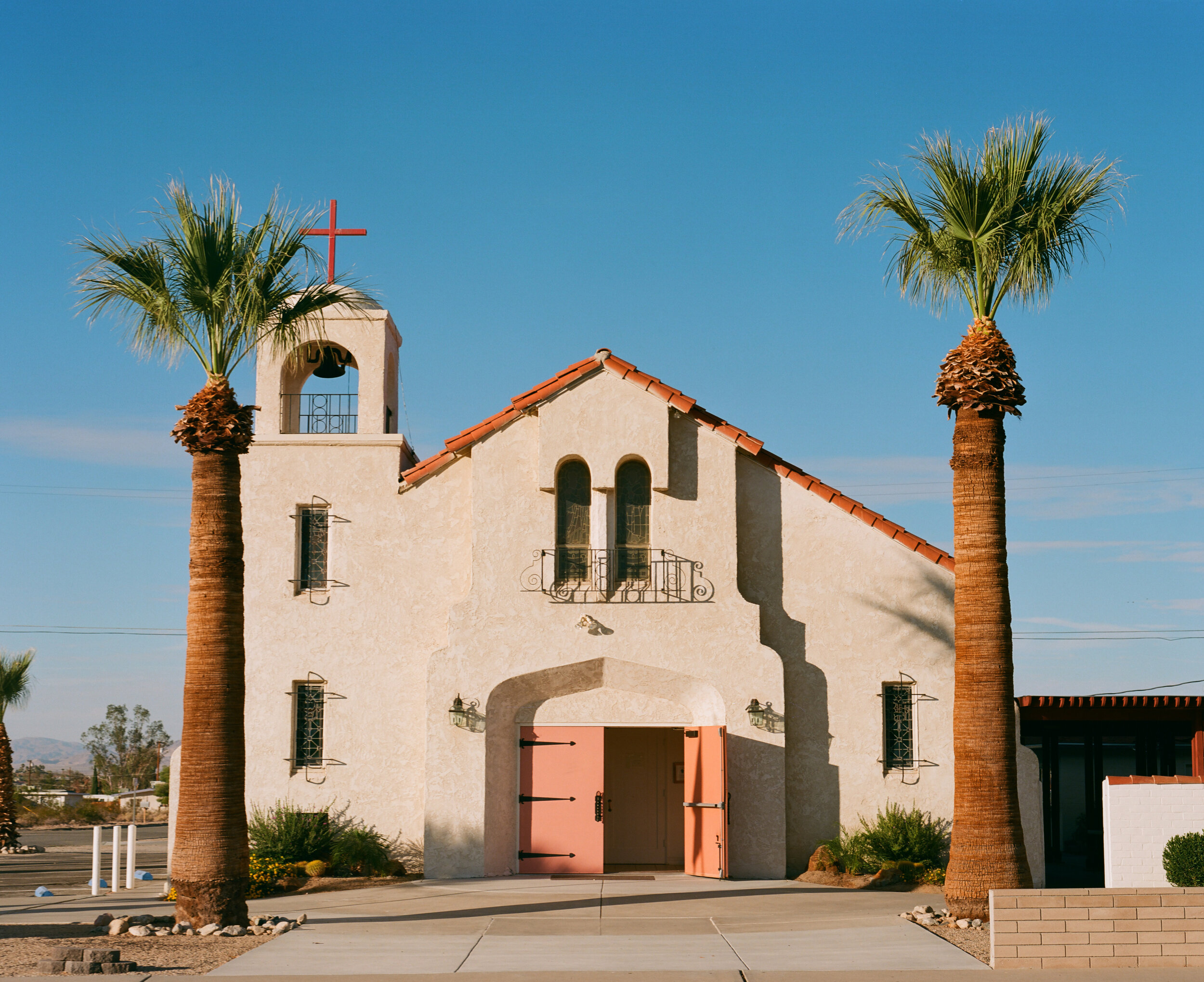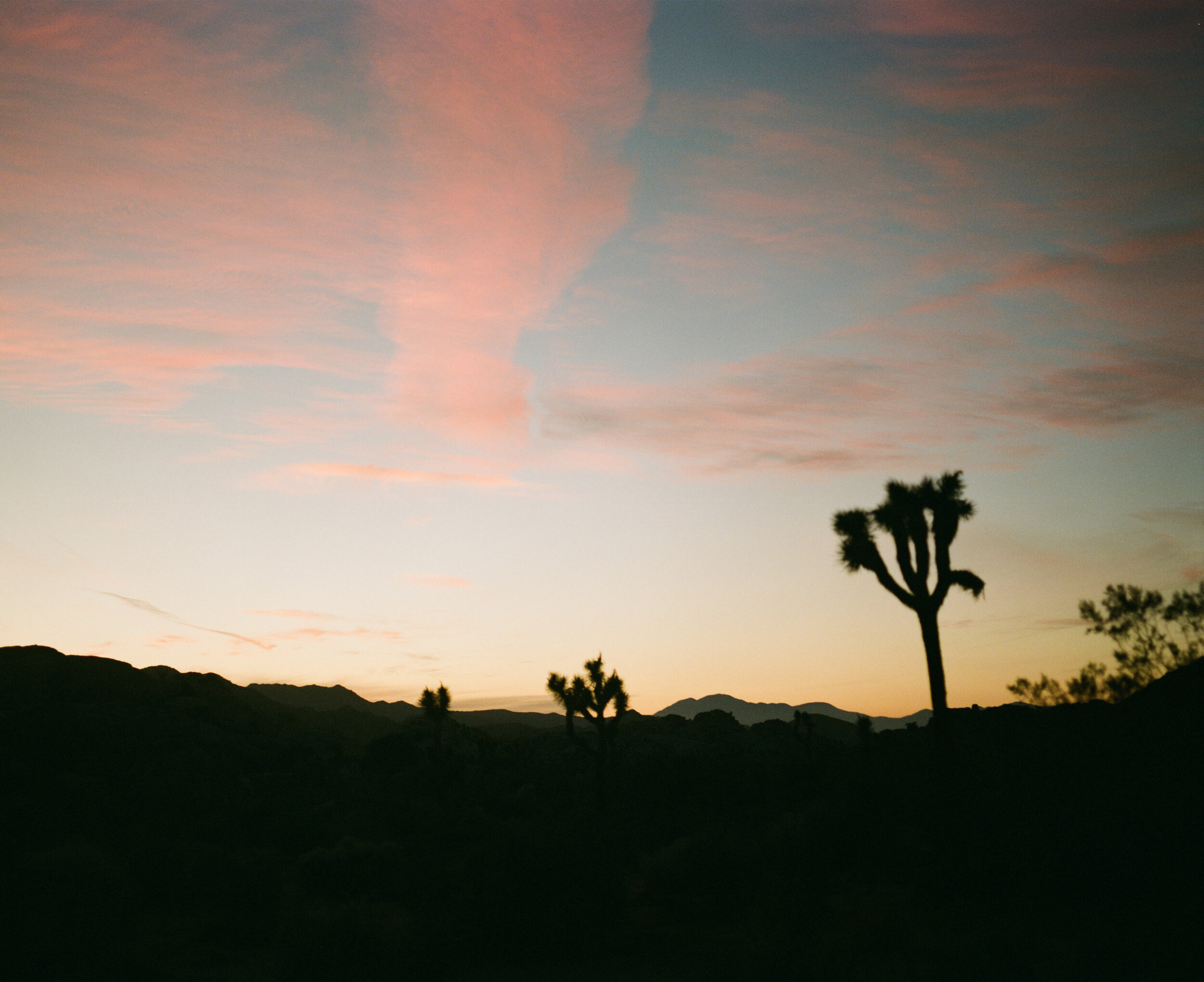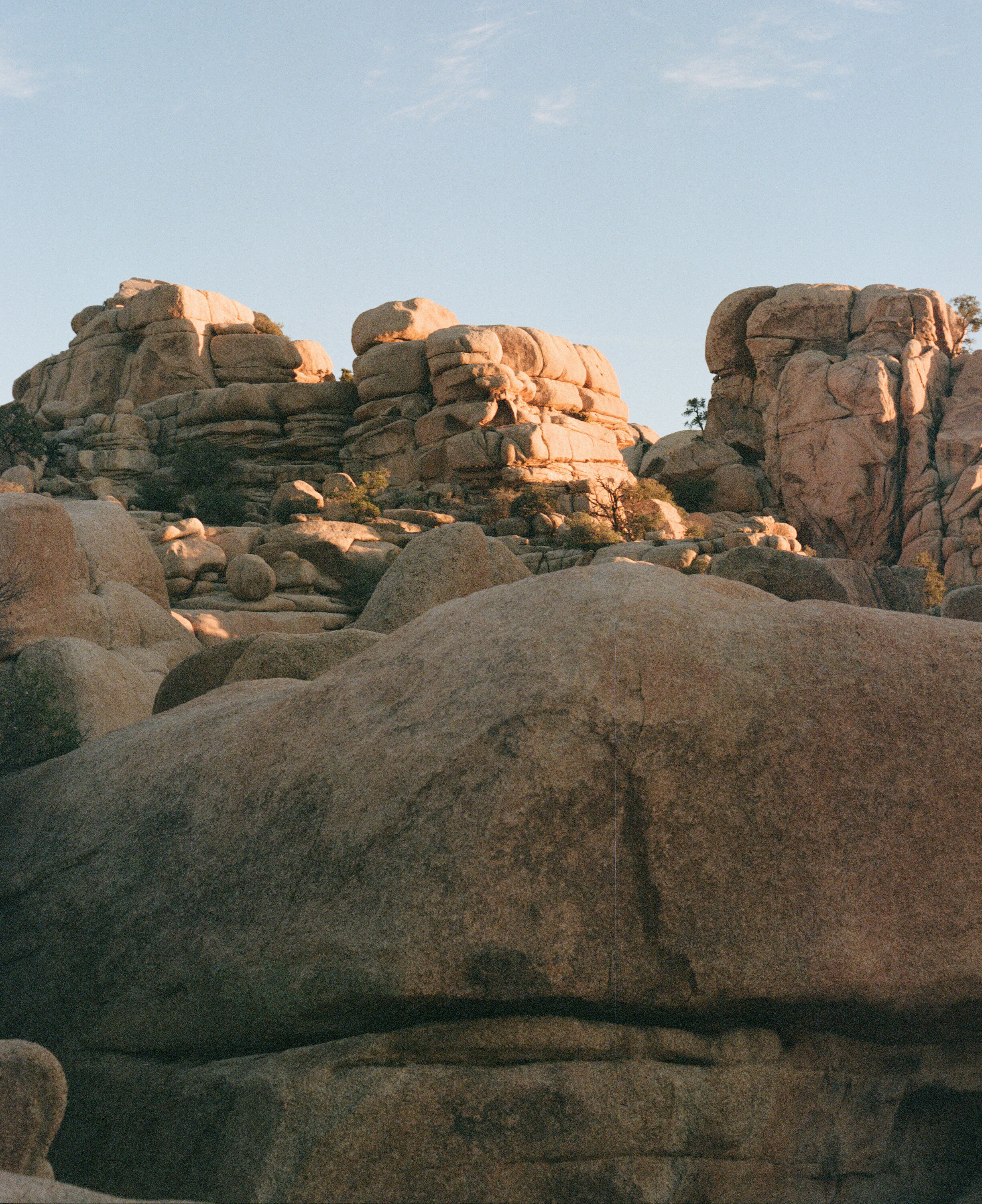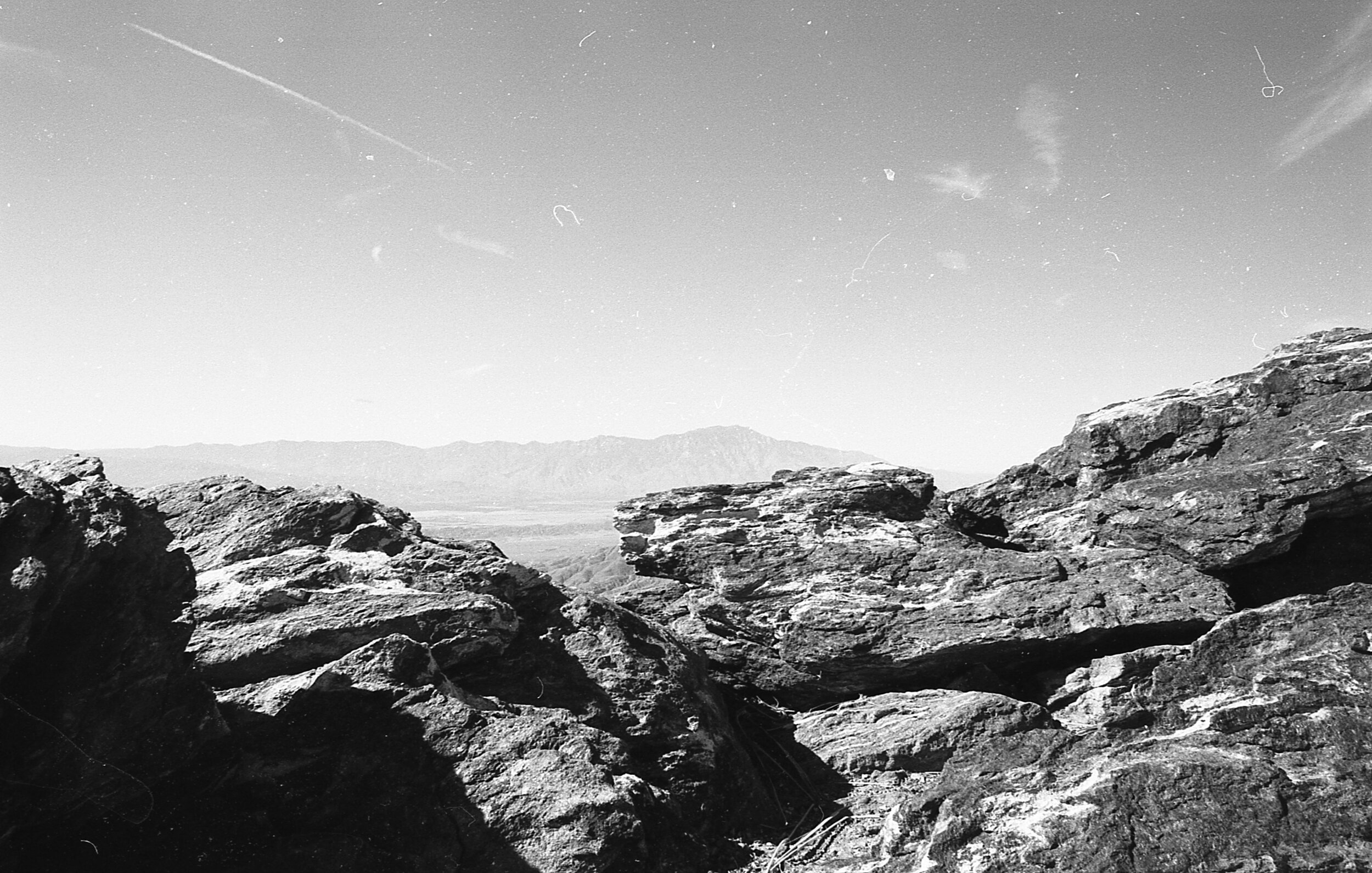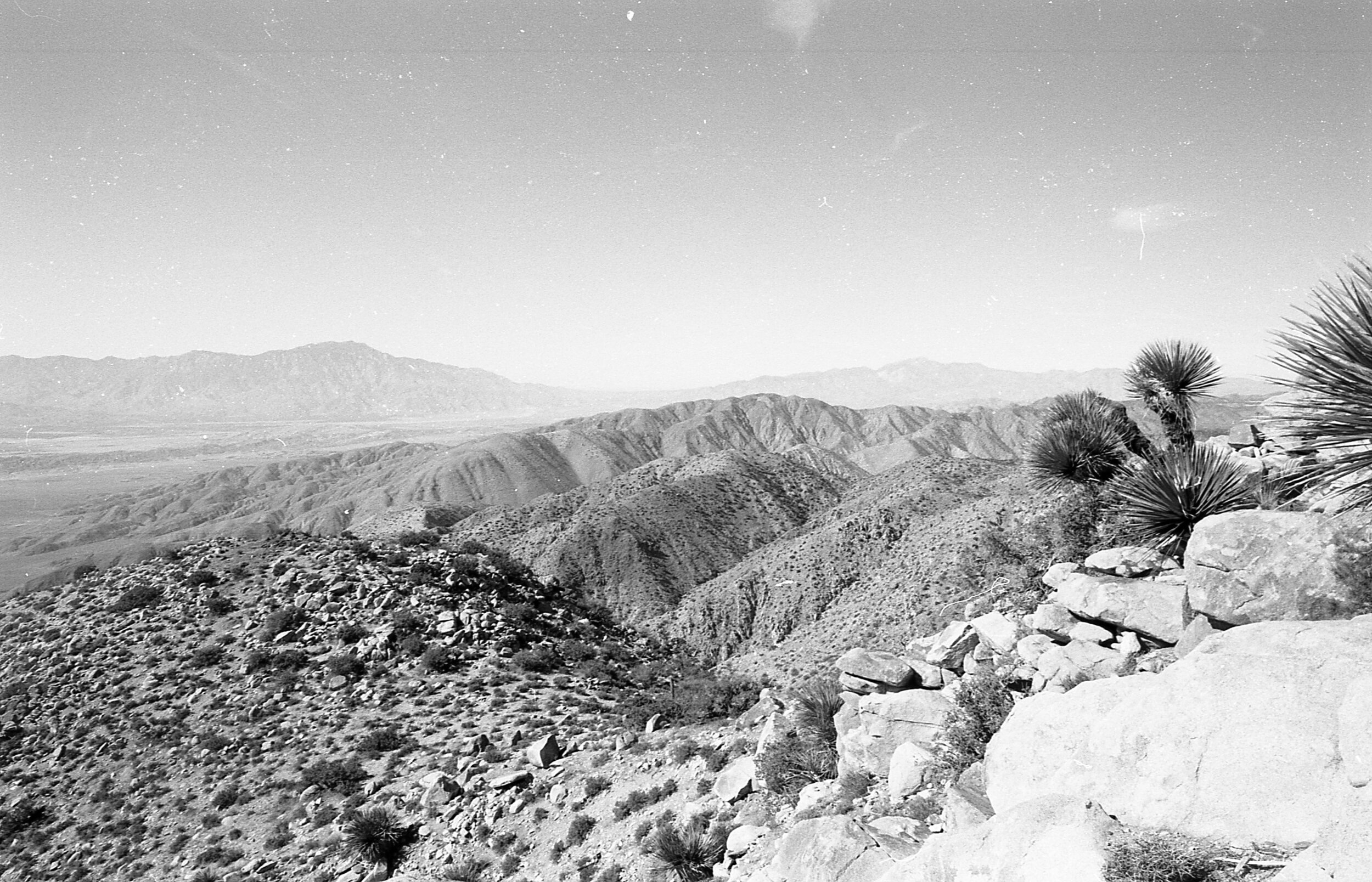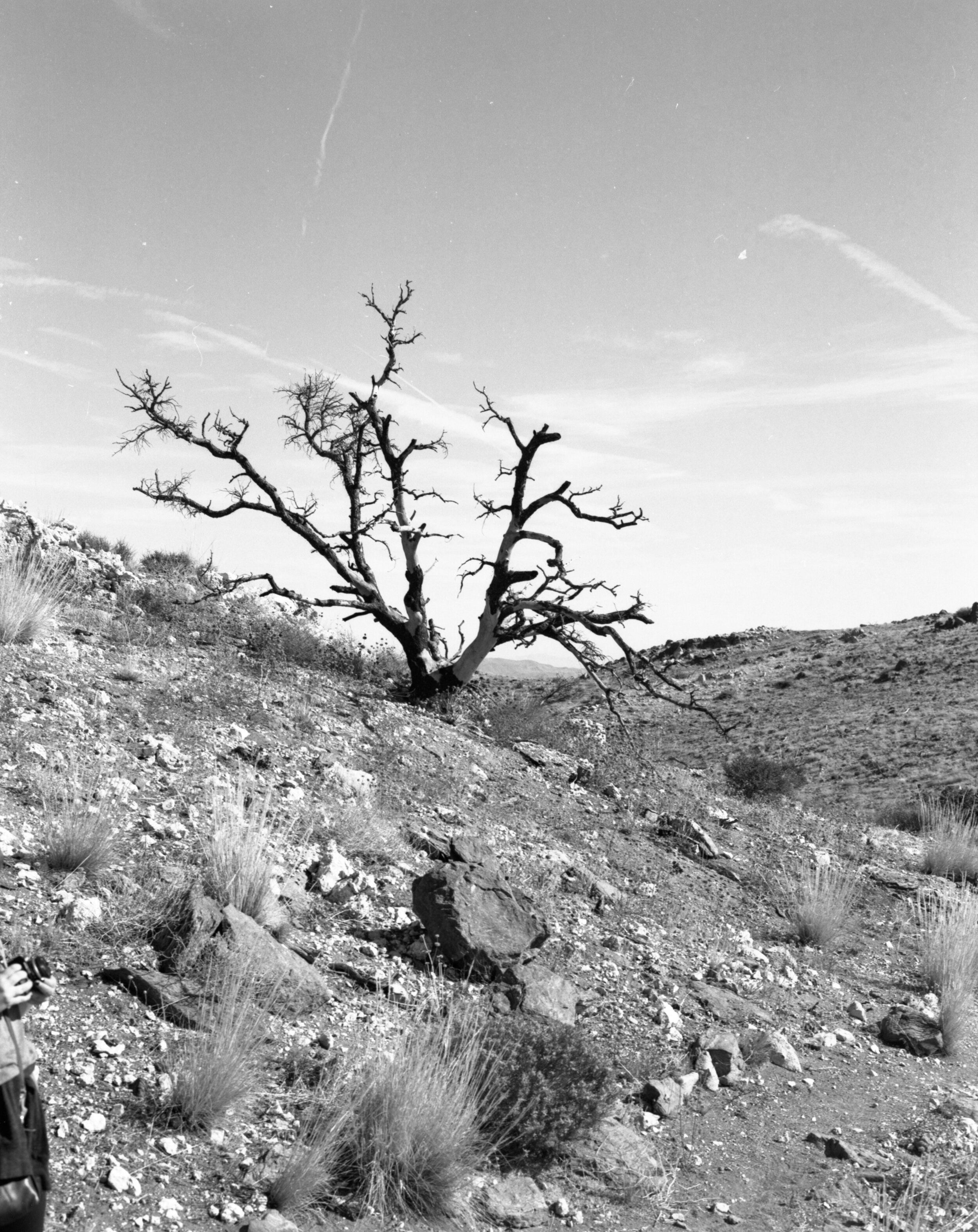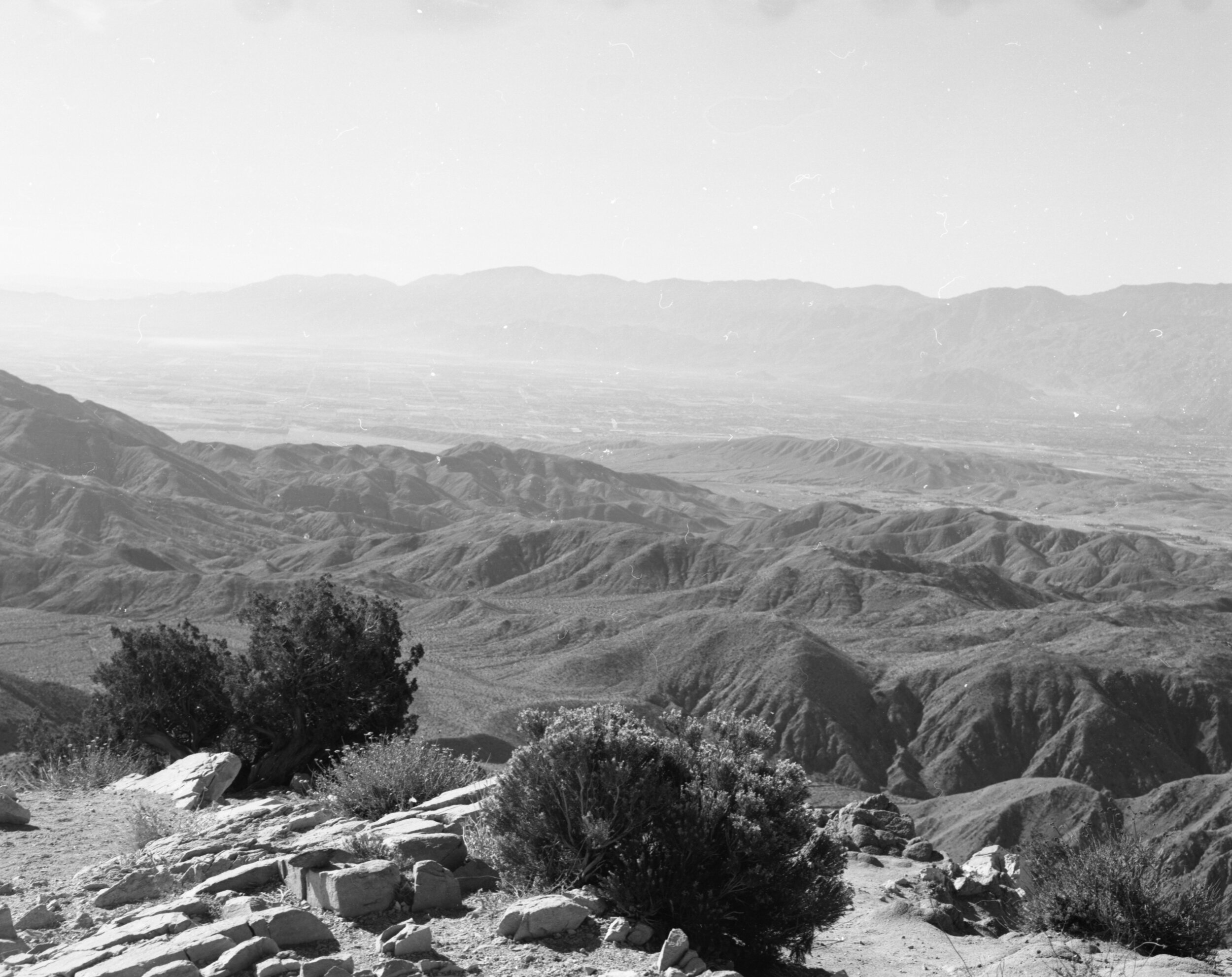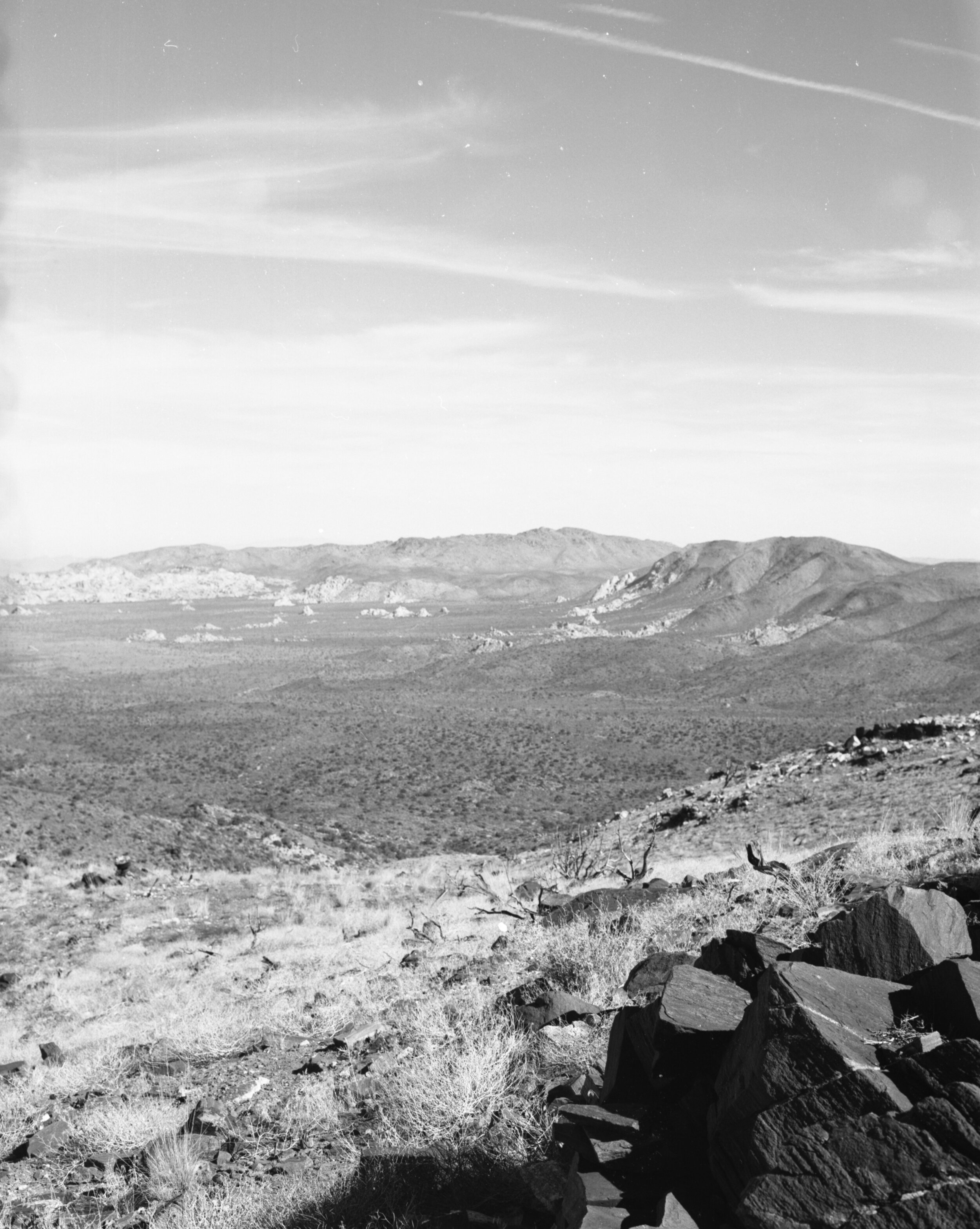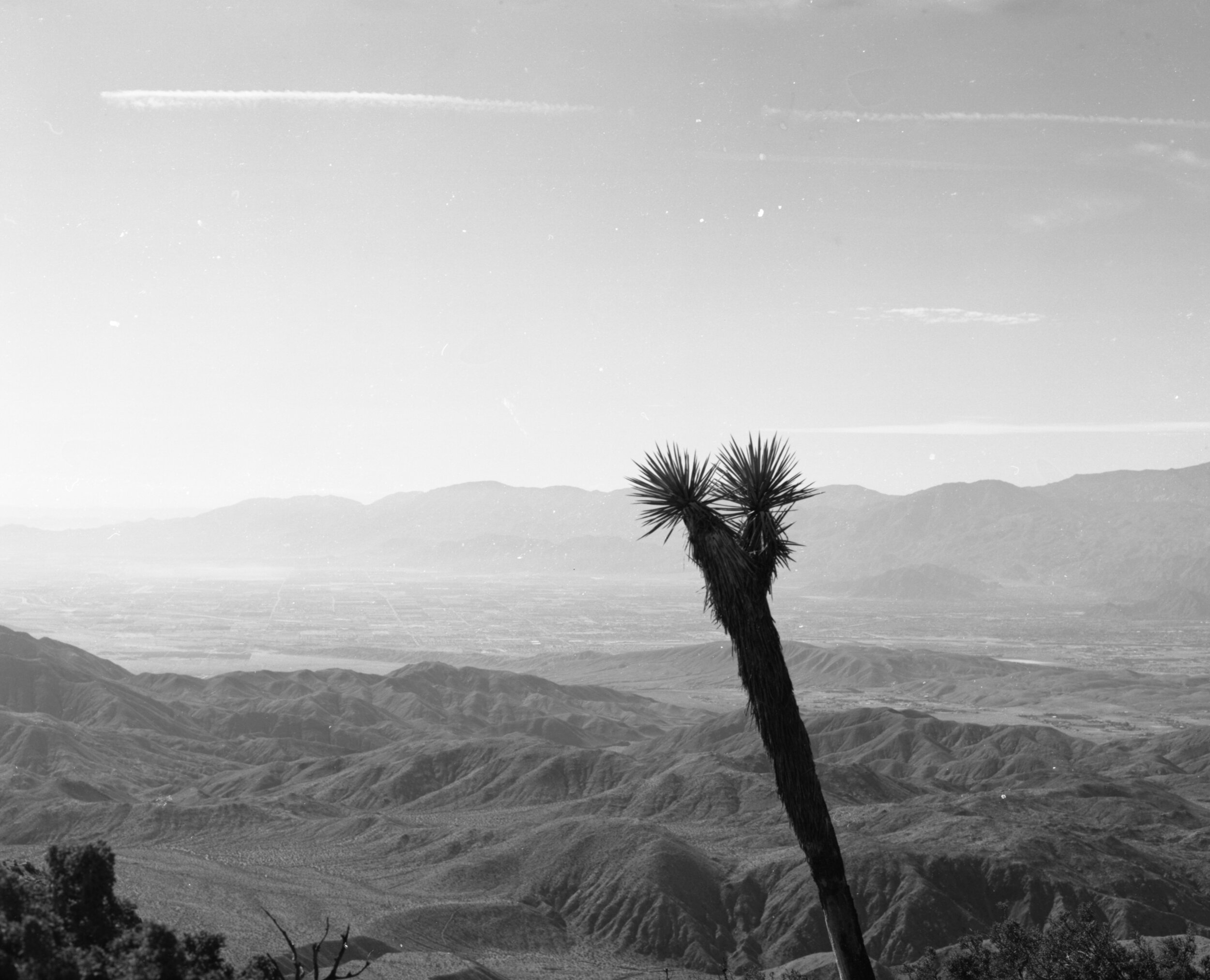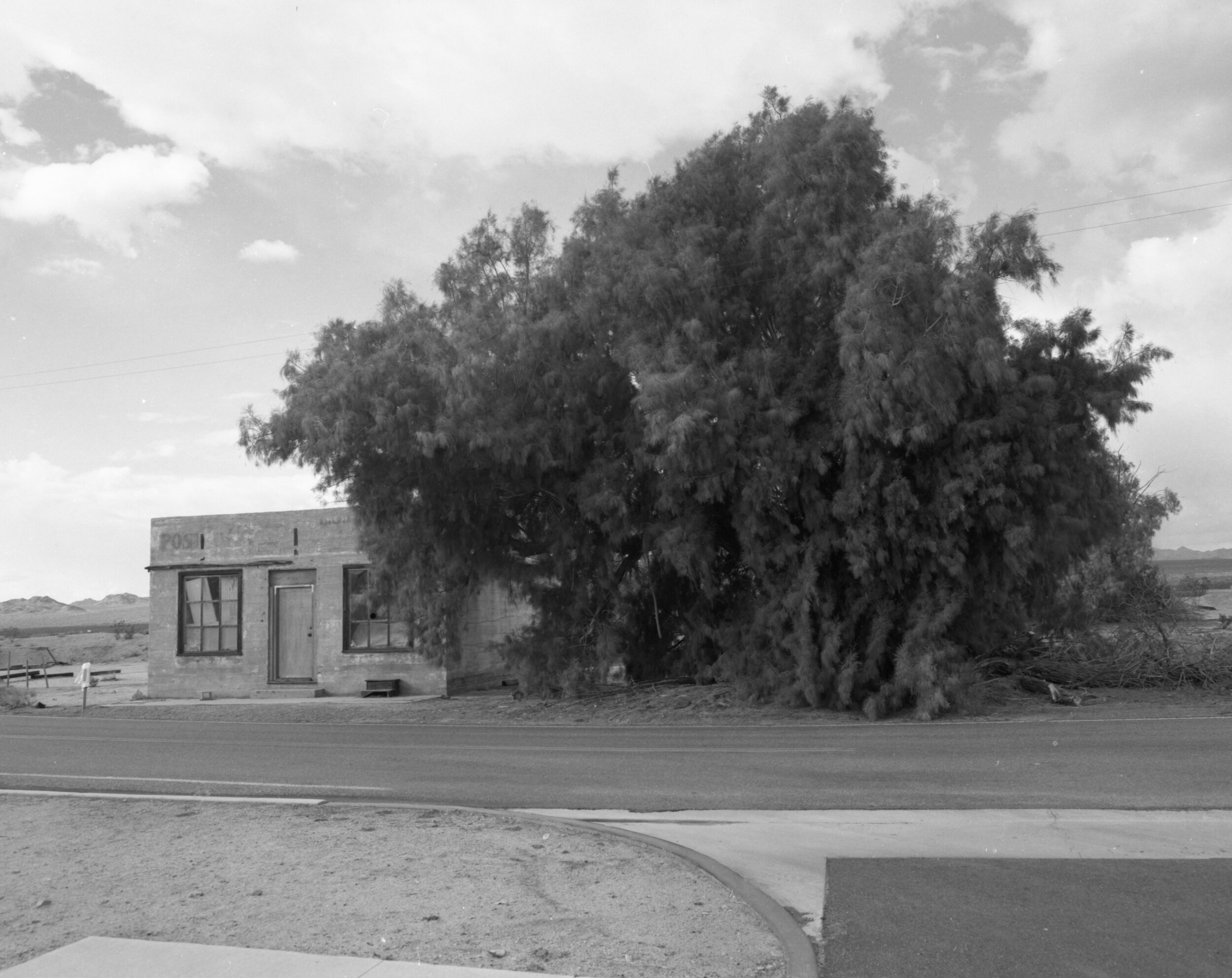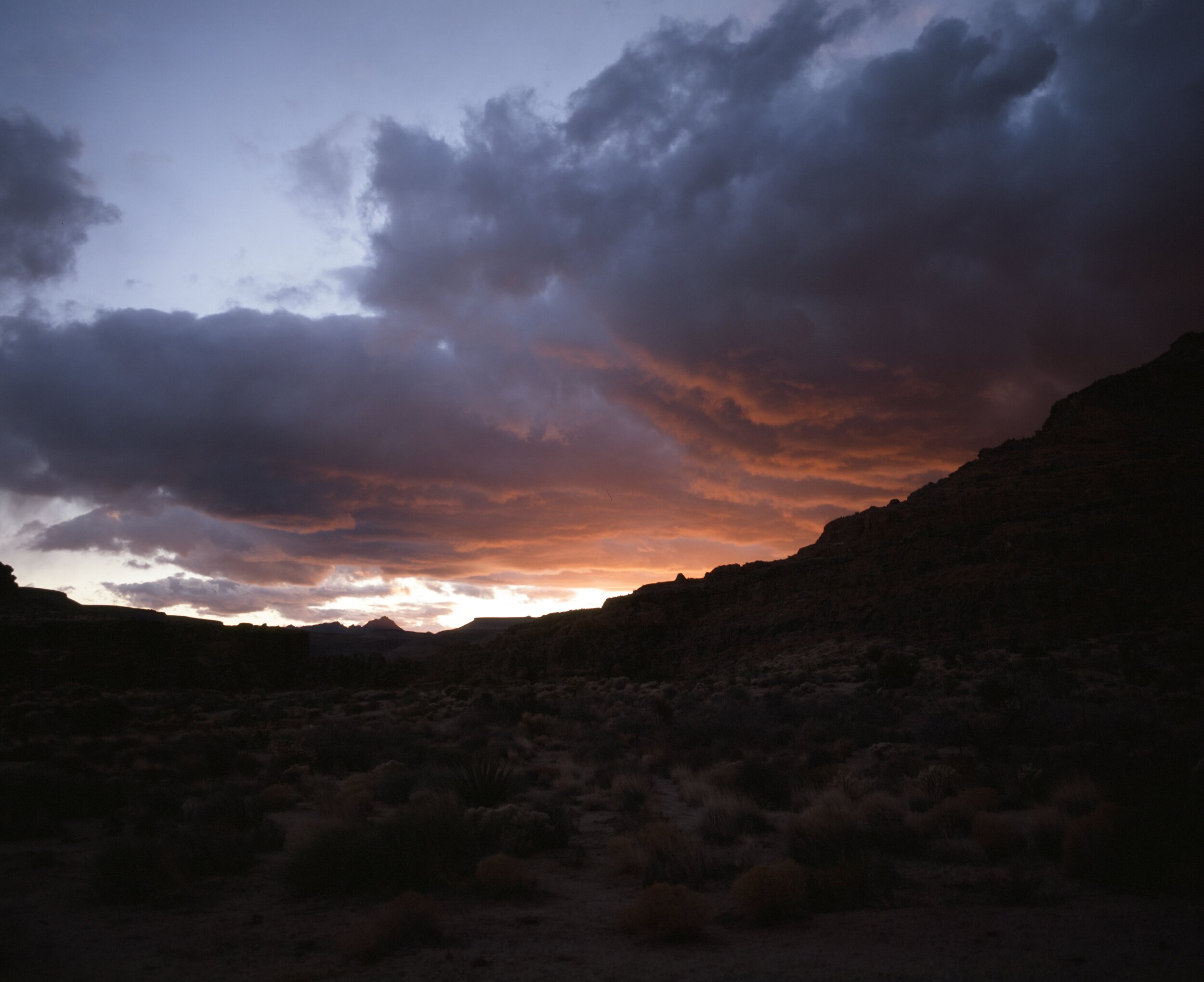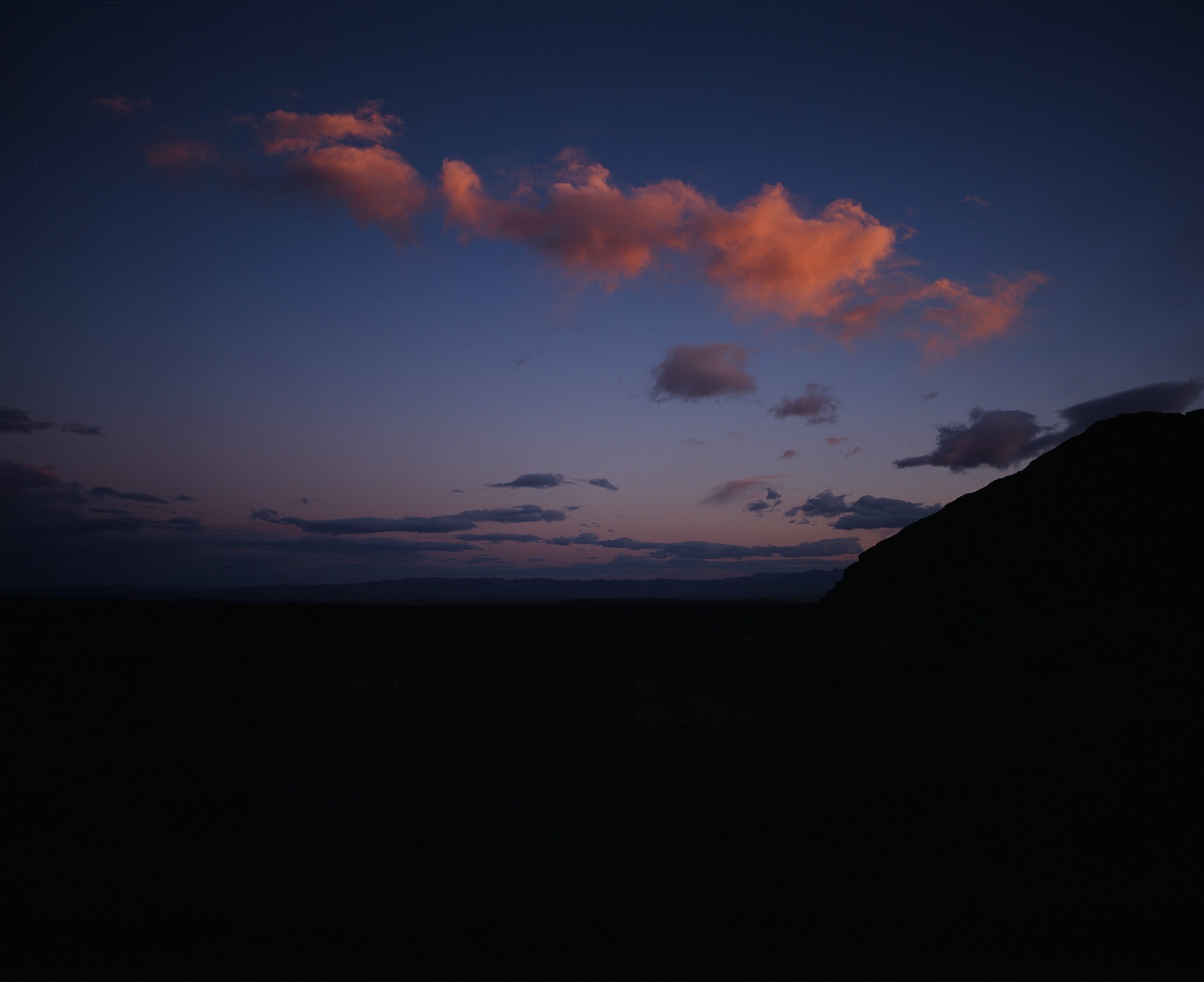Joshua Tree iii and the Mojave National Preserve -- November 2017, January 2018
Ektar 100 in 35mm above, Mix of Color 120 film Below.
Joshua Tree is beautiful, and ranks pretty high in my list of National Parks. It was definitely one of those trips that I learned a lot, but looking back two years later, my photos are kinda, definitely jank -- or like, they lack at least two years of practice and refinement, that I’d like to believe that I’ve built on to become a better landscape photographer, or photographer in general. I don’t know if I’d really call myself a landscape photographer anymore, but that’s another whole discussion.
Joshua Tree was the first trip I’d taken, not in Maine, with the Pentax 6x7. I was still operating with only two (one?) I’m 90% sure I forgot my late 55 f/4 takumar, so I was wingin’ it with the Pentax 6x7 Takumar 105 2.4 only -- which honestly *honestly* is about all the lens I need on the Pentax 6x7 -- given that’s coming two years later with clarity and practice -- but as the day wore on, I didn’t find myself missing my wide-angle much on the big camera.
Mix of Delta 100, Acros 100 Below in 35mm:
Of course I’d demoted my Minolta XD-11 to side-arm (dumb move) and had it equpped with the 24mm 2.8 MD Rokkor-X. Even then I quit using the thing by mid-day because carrying more than one camera is a huge pain -- let alone a camera *and* lenses *and* film. I really wish I’d just learned that lesson and it stuck. In fact I didn’t even shoot it at all on my Mojave Trip.
Back in the dark ages I was shooting 25% Kodak Ektar 100 (in both 120 and 35mm) and 75% whatever else I bought without carefully considering having a unified look but I’ll attempt to list it out for everyone in the audience: Off hand I know that I was wrapping up some Kentmere/Agfaphoto APX 100 in 35mm, Like one roll of Ektar in 35mm -- Maybe a roll of Acros? In 120 I know that I was shooting Ektar for color (probably my favorite photos from the day) alongside a handful of expired 220 Fuji Jank (read questionable Fuji Pro400h and Pro800z) which turned out like okay but not great. Also one roll of ancient fuji tungsten film -- which is alright, but I still need to fix the temperature -- I didn’t because fuck it. But still.
In BNW for 120 I know I was still on the “all Xtol all the time” train -- rather than using say rodinal in high dilution to compensate for the direct and extremely contrasty light conditions during the day -- again, that’s a two year knowledge gap difference so take it with a grain of salt.
Also of note, this was before I figured out how to adjust curves and histograms on my scanner -- I hated it so much that I actually went back and re-scanned all my 120 film for y’all because I can’t fucking stand looking at the old scans. I also kept getting scan lines and dust, so I’m pretty glad I finally started using canned air, and how to properly clean my sensors. All small incremental things for an easier process, but like, I was committed to the dustbowl/crust aesthetic then, for the black and white at least.
PAN F+ 120 below:
All that said, now that I’ve rescanned it, it’s a pretty inconsistent mix of 120 BNW. Checking it carefully, it’s Acros, Delta 100, Pan F+. I also accidentally ended up sending one roll of Acros away to be processed and scanned by not me. So it’s dealer’s choice on what developer they used. I’m not a huge fan of the scan, but even then, the photos in it of themselves aren’t wonderful, or like, I wouldn’t give them half a look now, and I wasn’t a fan two years ago either. Scanner issues aside, it did definitely cement me at my final result that the only way to go on BNW film to develop and scan everything yourself for maximum control over your results.
Delta 100 in 120:
Looking at my rescanning results -- I only shot one roll of Pan F+ in Joshua Tree -- it’s alright. I shot maybe two or three Delta 100. The rest was Fuji Acros, because, and for the kids, or new film based photographers who might be reading this, Fuji Acros used to be affordable, or no more expensive than any other black and white film, so I could afford to shoot a lot of it.
I think, two years later, improved scanning technique/etc, I’m going to go with the Acros in Xtol, but it’s pretty marginal between my Delta 100 results and the Acros results. As much time as I’ve spent berating Pan F+, it’s not really any notably any better or worse here, overall.
Acros 100 in 120:
Also lots of boring, samey shots on the BNW front on the Joshua Tree Trip — like there’s probably a couple keepers, but like, meh.
Other miscellaneous notes from these trip(s):
If you know you’re gonna go to at least three national parks inside of a year period, the park pass is a great deal. That said, it turns out that parks are free on veterans day -- a fact that the ranger who sold me my pass concealed from me.
I grew up climbing rocks and jumping around on the rocky beaches of Maine. In the area (dam?) where I wrapped up my day in Joshua Tree, old habits died hard, and I found myself jumping around camera bag and all to get the shots I wanted to, with mixed results. I’d still probably put a few of the shots on ektar in my portfolio today of “general landscapes.” I’d probably also do a print run from the negatives, but I honestly have no clue where I put them. Then again, as I review the photos and downsize them (so they actually make the pageload better) I might not actually put them out there beyond this post-mortem. My workstyle (projects around a central theme or thesis rather than grab bags of photos) has changed a lot since I shot this.
Delta 100 from the Mojave:
This is really more of a post-mortem for my 120 shots and travel process for two years ago -- a review of my shooting process and my general preferences when looking/examining images on what’s good and what’s not. It’s always a learning experience.
Kentmere/APX/RPX 100 is actually not bad. Not my favorite, but it’s not bad -- definitely a solid budget pick -- not sure how it shoots out against Fomapan 100, but w/e.
That walk out to Barker Dam from the parking area is a nice walk, but getting back as the sun sets is both really beautiful and really scary. Once the light goes down, it gets real dark real fast thanks to the lack of light pollution or really any lighting at all, so bring a flashlight, or walk fast.
Provia 100 in 120:
Epson Scan 2, despite my gripes about all the buttons and default settings being moved around, is a pretty substantial upgrade to Epsonscan -- the auto mode is a better starting point, the software actually moves to the next photo automatically -- it made re-scanning the 10-12 rolls I shot for this actually stomachable. Begrudgingly, I have to give Epson a “good job” sticker for it.
The Pentax 6x7 105mm f/2.4 is infamous for its bokeh/rendering for portraits, but honestly, stopped down it’s a perfectly fine landscape photography lens. While 105 might initially also seem more “zoomed” than a standard 50mm is on a 35mm camera, 105 actually looks about the same if not a touch wider because of the difference in aspect ratio/how much of the image circle you’re using compared to how much you waste in 2:3 as opposed to 6:7. Small note, but it’s worth thinking about.
I’ve completely forgotten what developer I used. I think it’s probably xtol, but I know I started using rodinal too by Late December 2017. It’s all Ilford Delta 100 for the BNW. I’m pretty happy with the look I got that day. Looking at the negs themselves they might be some of the nicest negs I’ve seen. Honestly, it may not technically be as sharp, but when Delta 100 hits the right roll of developer and lighting, it holds its own, or like in 120 It’s honestly a great film.
I think this is also probably one of the first times where the idea of exposure compensation clicked for me - and I actually corrected for it in camera, but I also hadn’t quite figured out how to adjust my development times to recover some additional shadow detail.
While not as full of “banger” photos as Joshua Tree is, the Mojave National Preserve is free to visit, and it’s also really beautiful, if not as immediately/simply photogenic. A year prior, my father and I had actually driven around it and hiked the sand dunes there on our way to a business trip in Vegas. I think the scale of the mountains in contrast with the flats of the high desert/plains is really really breathtaking but very hard to capture.
So anyway, I hope you’ve learned something from these photos, and maybe enjoyed them.
If you enjoy this article and content like it, grab something in the shop!


















